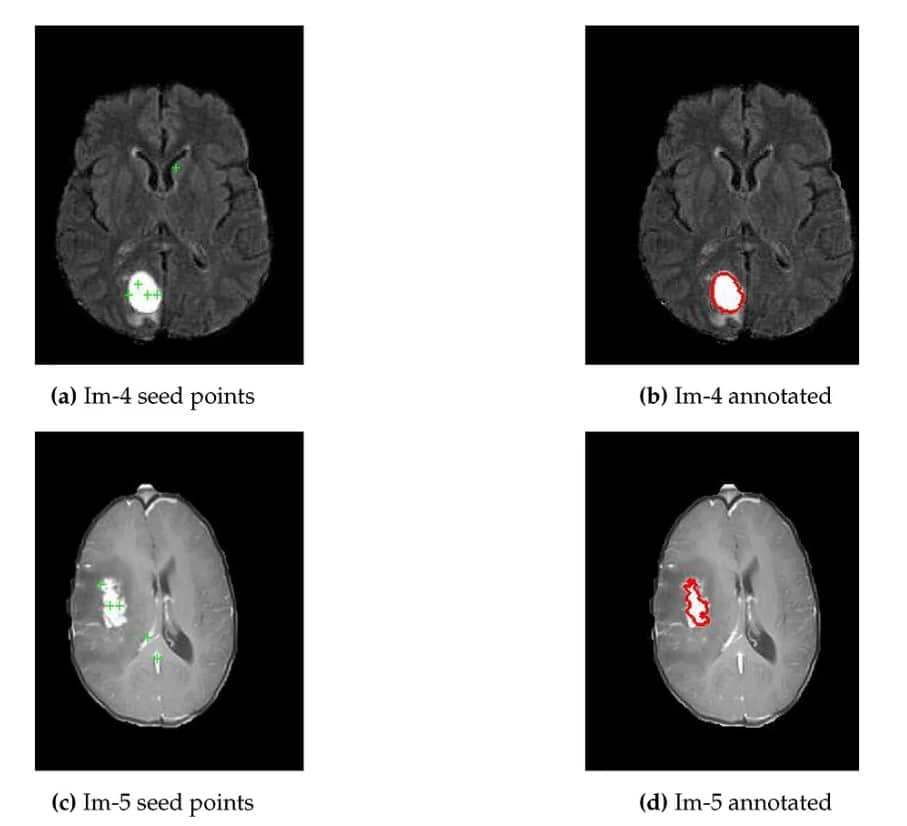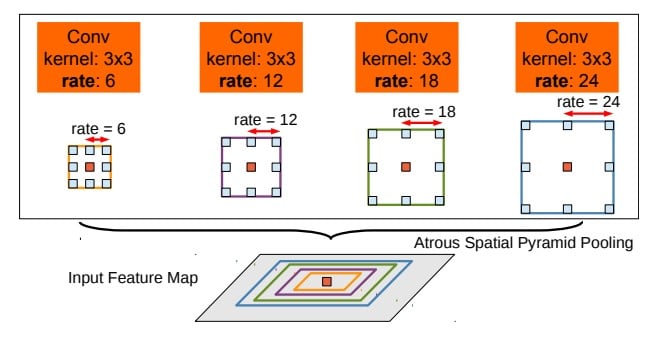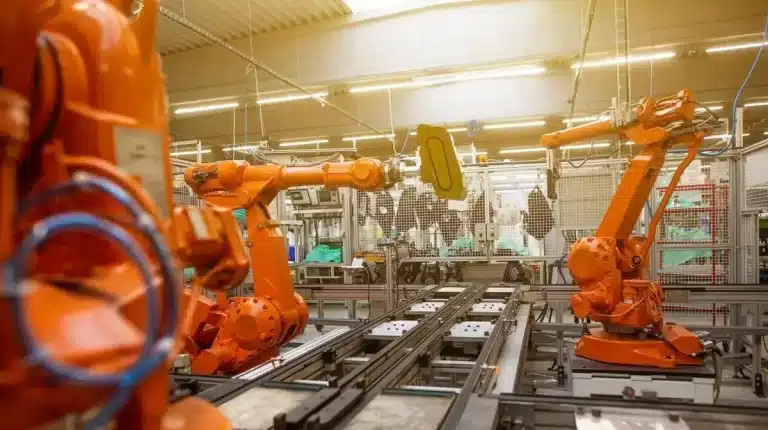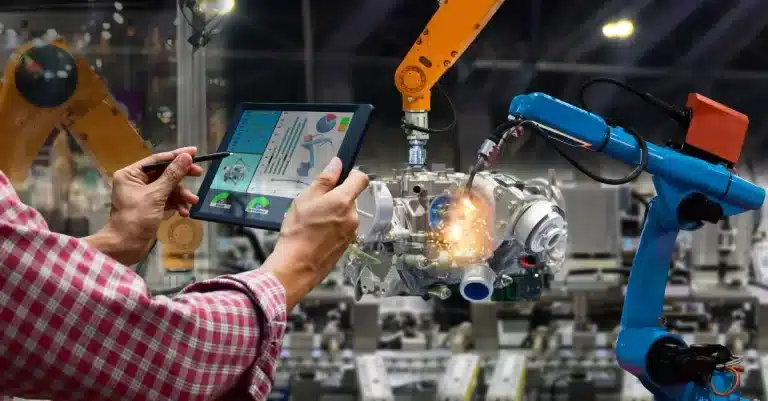Machine vision is revolutionizing how we interact with the world around us. At its core lies image segmentation. This crucial process breaks down images into meaningful parts.
In this article, we’ll dive deep into the best image segmentation methods. We’ll explore how these methods are used in modern machine vision applications.
Key Takeaways
- Image segmentation divides images into meaningful segments for analysis.
- It’s crucial for medical imaging, autonomous vehicles, object detection and so much more.
- Popular methods include thresholding, region-based, and edge detection techniques.
- Advanced techniques leverage neural networks and deep learning for improved accuracy.
- Choosing the right method depends on the specific task, resources, and image characteristics.
- Real-time segmentation and 3D image analysis are emerging trends in the field.
What is Image Segmentation?
Image segmentation is a fundamental technique in computer vision. It involves dividing an image into multiple segments or regions. These segments are groups of pixels that share similar characteristics. The goal is to simplify the image and make it easier to analyze.
Segmentation helps machines understand images the way humans do. It allows computers to identify objects, boundaries, and areas of interest within an image. These image segmentation methods are fundamental for many advanced image analysis tasks.
Why is Image Segmentation Important?
The importance of image segmentation cannot be overstated. It’s a critical step in numerous fields and applications:
- Medical imaging: Doctors use segmentation to identify tumors. They use it to measure organ dimensions. It also helps them plan surgeries.
- Autonomous vehicles: Self-driving cars rely on segmentation to recognize roads. It helps them detect pedestrians. It also allows them to identify other vehicles.
- Face recognition: Segmentation helps isolate facial features for accurate identification.
- Object detection: It allows machines to locate and classify objects in complex scenes.
- Satellite imaging: Segmentation aids in mapping and monitoring changes in land use.

These areas depend on accurate image analysis, and good segmentation makes this possible. As technology advances, the applications of image segmentation continue to grow.
Popular Segmentation Techniques
Let’s explore some of the most widely used image segmentation methods in detail.
1. Thresholding
Thresholding is one of the simplest yet effective segmentation techniques. It works by setting a pixel value threshold. Pixels above this threshold become one segment, while those below become another.

The Thresholding Process
The thresholding process involves several steps. First, a threshold value is chosen. For an 8-bit grayscale image, this might be 128. Then, the image is scanned pixel by pixel. Each pixel’s value is compared to the threshold.
Pixels with values above the threshold are marked as foreground. They often appear white. Pixels below the threshold are marked as background. These typically appear black.
Advantages and Limitations
Thresholding shines in its simplicity and speed. It works well for images with clear contrast between objects and backgrounds. However, it’s not without limitations.
Complex images pose a challenge for this method. Varying lighting conditions can also hinder its effectiveness. In such cases, more advanced segmentation techniques may be necessary.
2. Region-Based Segmentation
Region-based segmentation groups similar pixels into regions. It starts with “seed” points and grows regions around these seeds based on predefined criteria.
The process typically involves:
- Selecting initial seed points.
- Examining neighboring pixels.
- Adding similar pixels to the region.
- Repeating until no more pixels can be added.
This technique works well for images with clear boundaries between different regions. It’s often used in medical imaging to isolate organs or tumors.
3. Edge Detection
Edge detection focuses on finding boundaries within an image. It looks for sudden changes in pixel intensity, which often indicate edges of objects.
Common edge detection algorithms include:
- Sobel operator: Uses two 3×3 kernels to calculate intensity gradients.
- Canny edge detector: A multi-stage algorithm that detects a wide range of edges.
Edge detection is crucial in applications like object recognition and image compression. However, it can be sensitive to noise and may require additional processing to create closed contours.

4. Clustering-Based Methods
Clustering groups pixels with similar traits. K-means clustering is a popular choice in this category. Here’s how it works:
- Choose K cluster centers randomly.
- Assign each pixel to the nearest cluster center.
- Recalculate cluster centers based on assigned pixels.
- Repeat steps 2-3 until convergence.

K-means is fast and works well for many types of images. However, choosing the right number of clusters (K) can be challenging and may require domain knowledge.
5. Neural Network Segmentation
Deep learning has revolutionized image segmentation methods in recent years. Convolutional Neural Networks (CNNs) excel at learning complex patterns in images.
CNNs for segmentation typically use an encoder-decoder architecture:
- The encoder extracts features from the input image.
- The decoder uses these features to create a segmentation map.
Neural networks can achieve high accuracy. However, they require large amounts of labeled training data. They also need significant computational resources.
EasyODM’s utilization of CNN models
EasyODM employs Convolutional Neural Networks (CNNs) formatted in the Open Neural Network Exchange (ONNX) framework. This facilitates interoperability between various machine learning tools and frameworks.
This compatibility allows EasyODM to integrate advanced CNN architectures, such as YOLO and EfficientNet into its vision software effectively.
In turn, this format ensures efficient performance, particularly for real-time object detection tasks in industries like manufacturing.
Advanced image Segmentation Methods
6. Mask R-CNN
Mask R-CNN (Regional Convolutional Neural Network) is a powerful tool for instance segmentation. It can identify individual objects and their exact outlines within an image.

Architecture and Functionality
Mask R-CNN builds on the foundation of Faster R-CNN, which is designed for object detection. The key innovation of Mask R-CNN is the addition of a branch for predicting segmentation masks. This allows the network to not only detect objects but also precisely delineate their boundaries.
Versatility and Applications
One of the strengths of Mask R-CNN is its ability to handle multiple objects in a single image. This makes it particularly useful in complex scenes where objects may overlap or be partially obscured. As a result, Mask R-CNN has found wide application in fields such as robotics, autonomous driving, and medical image analysis.
7. U-Net
U-Net was originally designed for biomedical image segmentation. Its unique architecture allows it to capture context and enable precise localization, making it a popular choice in various fields.
Architectural Overview
The U-Net structure is characterized by its U-shaped design, which gives the network its name. It consists of two main paths: a contracting path to capture context and an expanding path that enables precise localization. These paths are connected by skip connections, which preserve spatial information throughout the network.
Efficiency and Popularity
One of the key advantages of U-Net is its ability to perform well even with limited training data. This efficiency has made it particularly popular in medical imaging, where large datasets can be challenging to obtain.
U-Net has also found success in other sectors, demonstrating its versatility across different domains.
Applications and Adaptations
In medical imaging, U-Net has been used for tasks such as tumor detection, organ segmentation, and cell counting. In satellite imagery, it has been applied to land use classification, change detection, and urban planning.
The success of U-Net has also led to numerous variations and adaptations, further expanding its applicability in image segmentation tasks.
8. DeepLab
Google’s DeepLab is a state-of-the-art method for semantic segmentation. It uses atrous (dilated) convolutions to capture multi-scale context, pushing the boundaries of segmentation accuracy.
Key Innovations
DeepLab introduces several important innovations in image segmentation methods. One of its core features is the use of Atrous Spatial Pyramid Pooling (ASPP). This technique allows the network to process images at multiple scales, capturing both fine details and broader context.

Network Architecture
The DeepLab architecture is built on an encoder-decoder structure, utilizing atrous convolutions throughout.
This design allows the network to maintain a large field of view without increasing computational complexity. Additionally, DeepLab incorporates fully connected Conditional Random Fields for refinement of segmentation boundaries.
Performance and Applications
DeepLab has achieved high accuracy on challenging datasets, making it a benchmark in semantic segmentation tasks. Its success in research has led to widespread adoption in various industries, from autonomous vehicles to medical imaging.
The continuous improvements in DeepLab versions demonstrate the ongoing evolution of image segmentation methods in deep learning.
9. YOLO Object Detection and Instance Segmentation
You Only Look Once (YOLO) is a state-of-the-art object detection system. Unlike traditional methods that scan images multiple times, YOLO processes the entire image in one go.
This makes it fast and suitable for real-time applications. YOLO not only excels in object detection but also performs instance segmentation, where it identifies each object and its boundaries within an image.
EasyODM’s Integration of YOLO
EasyODM utilizes YOLO for its machine vision software solutions. With its advanced real-time detection capabilities, YOLO is ideal for identifying defects in manufacturing processes.
EasyODM has integrated this technology to improve efficiency and accuracy in industrial settings, making it a powerful tool for defect detection and quality inspection.
The Future of image Segmentation Methods
Image segmentation is a rapidly evolving field. Exciting trends include:
- Real-time segmentation: Faster algorithms for live video processing.
- 3D image segmentation: Techniques for volumetric data in medical imaging and 3D modeling.
- Weakly supervised learning: Methods that require less labeled data for training.
- Multi-modal segmentation: Combining data from different sensors for more accurate results.
These advances will make segmentation even more powerful. They will open up new possibilities in AI and computer vision. Researchers are constantly developing new image segmentation methods to improve accuracy and efficiency.
Challenges in Image Segmentation
Despite significant progress, several challenges remain in image segmentation:
- Handling low-contrast images: Distinguishing objects in poor lighting conditions.
- Dealing with occlusions: Segmenting partially hidden objects.
- Segmenting small objects: Accurately identifying tiny details in images.
- Semantic understanding: Bridging the gap between pixel-level segmentation and high-level understanding.
- Generalization: Creating models that work well across different domains and image types.
Researchers are actively working on these issues. They are pushing the boundaries of what’s possible in image analysis. Different image segmentation methods may be combined to achieve better results in complex scenarios.
Conclusion
Image segmentation is a cornerstone of machine vision. It forms the backbone of many cutting-edge applications. The methods we’ve explored range from basic thresholding to advanced neural networks. Each has its strengths and use cases.
As technology advances, so will segmentation techniques. This ongoing evolution will open up new possibilities in AI, robotics, and healthcare. It will also impact many other fields. By understanding these image segmentation methods, we can push the boundaries of machine vision. We can unlock new ways for computers to interpret the visual world.
The future of image analysis is bright. Segmentation plays a crucial role in bridging the gap between raw pixel data and meaningful information. As we continue to refine these techniques, we’ll see even more exciting applications emerge. These applications will transform how we interact with and understand visual data.
Understanding various image segmentation methods helps in selecting the most appropriate technique for specific use cases. Evaluating the performance of different image segmentation methods is essential for improving machine vision systems.


